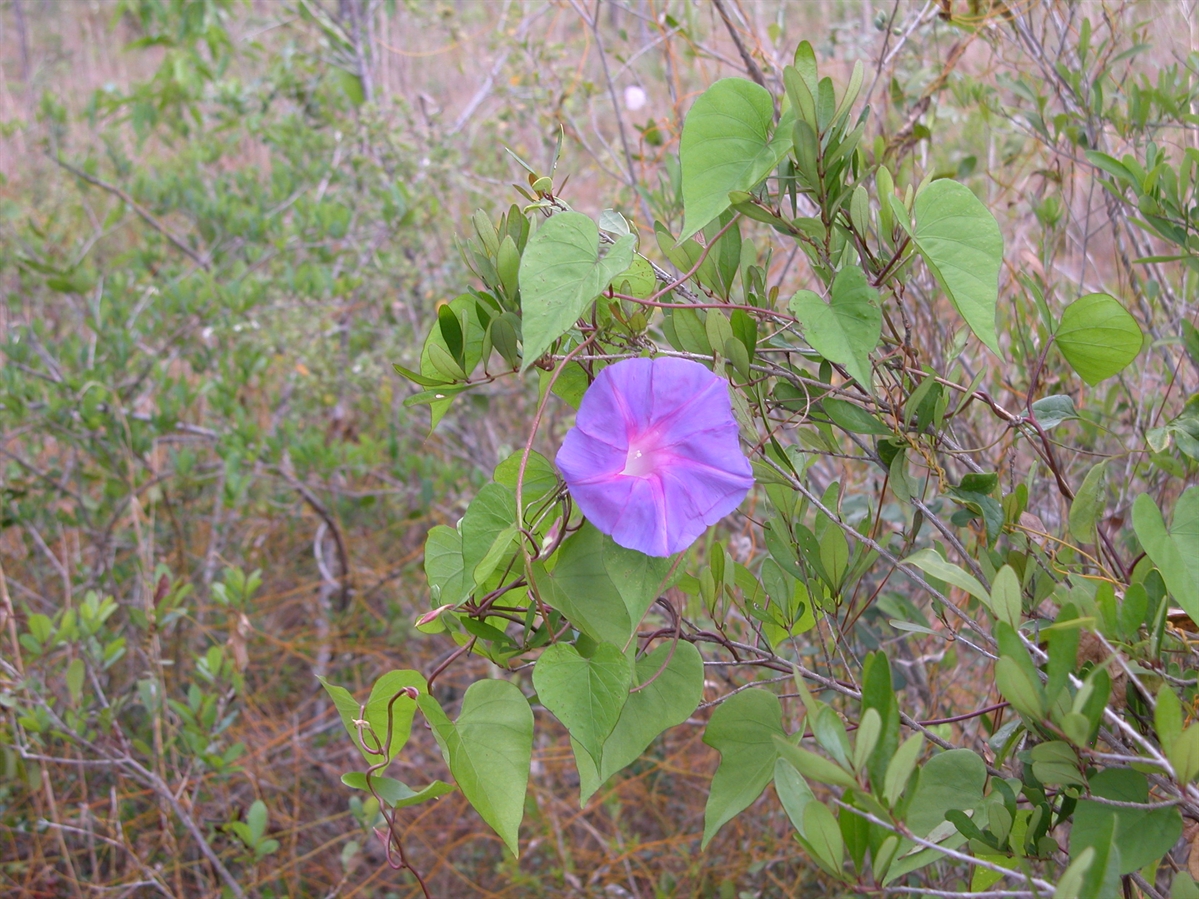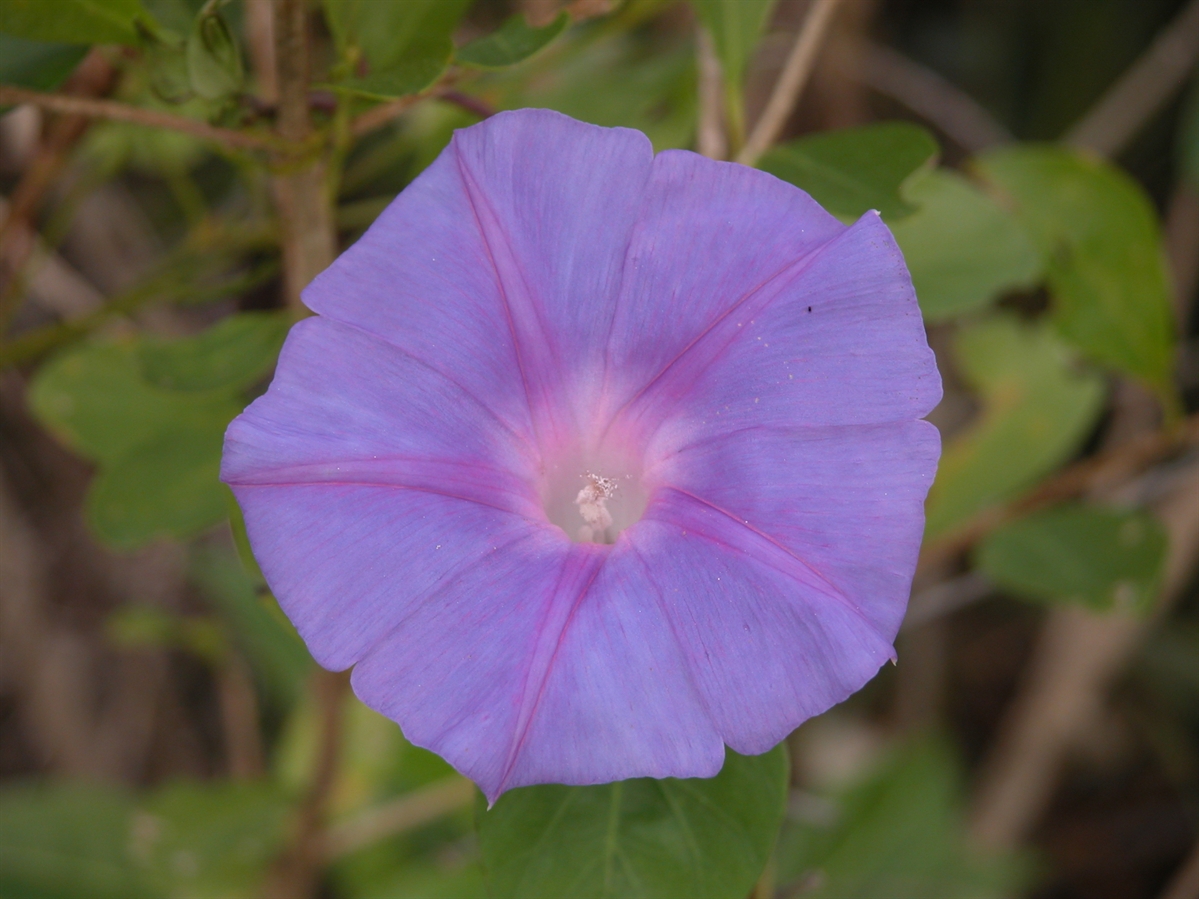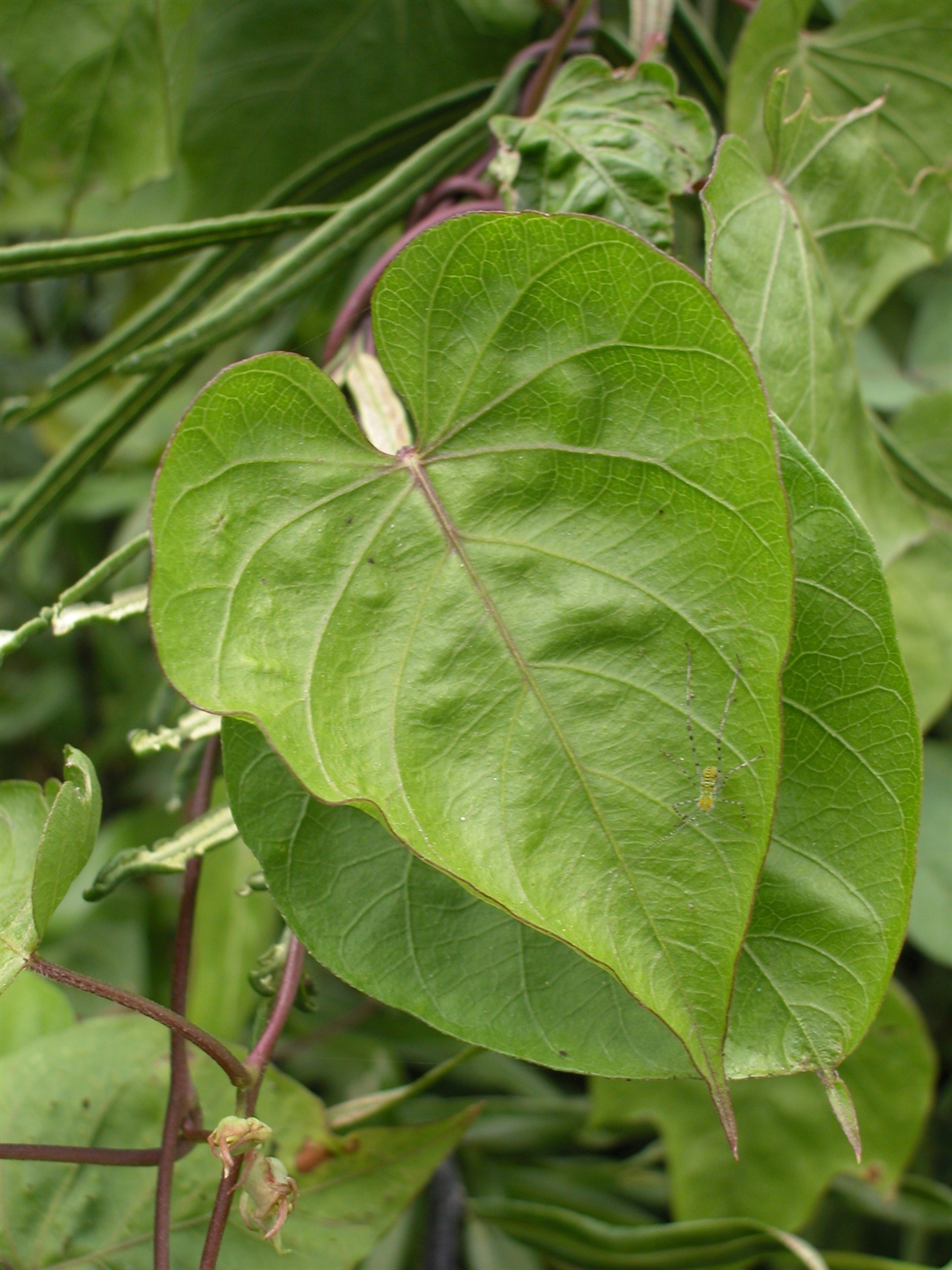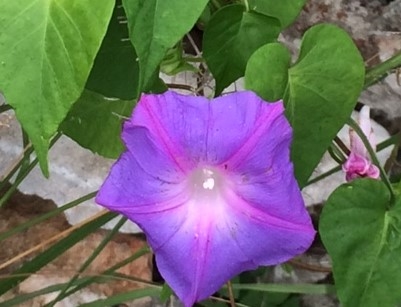Habit: Ipomoea indica grows as an herbaceous perennial vine that becomes woody at its base. The leaves are arranged alternately to 10 cm in length, ovate (often with 3 lobes), with a cordate leaf base. The leaf margins are entire and there is an acuminate leaf apex.
The complete, perfect, actinomorphic flowers are arranged cymes or are solitary. The inflorescences typically have a white pubescence. The calyx has 5 unfused green sepals. The corolla has 5 fused purple blue petals forming a funnelform tube. There are 5 stamens fused to the throat of the corolla tube and at the point of attachment are numerous hairs. The ovary is superior with 3 locules and numerous seeds. The fruit is a capsule at maturity.
Habitat: Ipomoea indica grows in Human Altered environments (abandoned fields, dumps, edges of yards/roadsides).
Distribution: Ipomoea indica occurs on the central and northern island groupings in the Lucayan Archipelago. It is also distributed through out the tropical and subtropical areas of the world.
Medicinal/Cultural/Economic usage: Ipomoea indica is not used medicinally in the Lucayan Archipelago.



